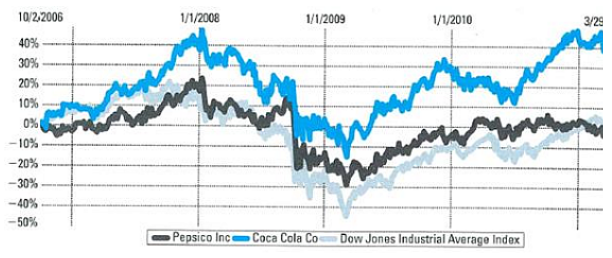Question
WHEN APPOINTED CEO of PepsiCo in 2006, Ms. Indra Nooyi wasonly the 11th woman to run a Fortune 500 company. Since then, Ms. Nooyi has
WHEN APPOINTED CEO of PepsiCo in 2006, Ms. Indra Nooyi wasonly the 11th woman to run a Fortune 500 company. Since then, Ms. Nooyi has been ranked in the top ten of Forbes magazine?s list of the world?s 100 most powerful women. In 2010, she topped Fortune?s ranking of the most powerful women in business. Today, leading a company that employs some 300,000 people worldwide, Ms. Nooyi is considered one of the mot powerful business leader globally.
A native of Chaenni, india, Ms. Nooyi obtained a bachelor?s degree in ?physics, chemistry, and mathematics from Madras Christian College, an MBA from the Indian Institiute of Management, and a master?s degree from Yale University. Prior to joining PepsiCo in 1994, Ms. Nooyi worked for Johnson & Johnson, Boston Consulting Group (BCG), Motorola, and ABB. For her BCG interview, right out of Yale, Ms. Nooyi wore a traditional sari. Ms. Nooyi is not the typical Fortune 500 CEO. She is well known for walking around the office barefoot and singing ???a remnant form her lead role in an all-girls rock band in high school.
It should come as no surprise, therefore, that Ms. Nooyi?an executive who spends more than 50 percent of her time outside the U.S.?has been shaking up things at PepsiCo. She took the lead role in spinning off Taco Bell, Pizza Hut, and KFC in 1997. Later, she masterminded the acquisitions of Tropicana in 1998 and Quaker Oats (including Gatorade) in 2001. As CEO, Ms. Nooyi declared PepsiCo's vision as performance with a purpose, defined by three dimensions:
1. Human sustainability, which concerns the strategic intent to make PepsiCo's product portfolio healthier, to combat obesity. PepsiCo wants to make "fun foods" such as Frito-Lay and Doiitos healthier (less salty and fatty), and to include healthy choices in its product portfolio (such as Quaker Oats products and Tropicana fruit juices). Ms. Nooyi is convinced that if food and beverage companies do not make their product lineups healthier to combat obesity, these companies will face the same repercussions that tobacco companies did.
2. Environmental sustainability, to ensure that PepsiCo's operations don't harm the natural environment. The company has initiatives such as water and energy reduction, stepping up recycling, and promoting sustainable agriculture. The goal is to transform PepsiCo into a company with a net-zero impact on the environment. Ms. Nooyi believes that young people today will not patronize a company that does not have a sustainable strategy.
3. The whole person at work, which attempts to create a corporate culture in which employees "not just make a living, but also have a life." Ms. Nooyi argues that this allows for the unleashing of both the mental and emotional energy of every employee.
PepsiCo's vision of performance with a purpose acknowledges the importance of corporate social responsibility and stakeholder strategy. Ms. Nooyi is convinced that companies have a duty to society to "do better by doing better." She subscribes to a triple-bottom-line approach to competitive advantage, declaring that the true profits of enterprise are not just "revenues-costs" but "revenues-costs-costs to society." Costs to society are externalities?such as pollution or the cost of health care to combat obesity?that companies do not bear. Ms. Nooyi argues that the time when corporations can just pass on their externalities to society is over. Critics note, however, that although the rhetoric of performance with a purpose appears to be powerful, PepsiCo's financial performance so far has been disappointing. Exhibit MC12.1 (next page) shows PepsiCo's stock performance versus its archrival Coca-Cola. Since Ms. Nooyi took the helm at PepsiCo, Coca-Cola's stock has appreciated by roughly 50 percent, while PepsiCo's stock has remained flat and is merely tracking the DJIA.

Review Chapter 3: External Analysis: Industry Structure, Competitive Forces, and Strategic Groups.
Review Chapter 5: Competitive Advantage and Firm Performance.
Review Chapter 8: Corporate Strategy: Vertical Integration and Diversification.
Review Chapter 12: Corporate Governance, Business Ethics, and Strategic Leadership.
As a senior executive at PepsiCo, Ms. Nooyi was the driving force behind selling PepsiCo's restaurant businesses (Taco Bell, Pizza Hut, and KFC) and acquiring Quaker Oats and Tropicana. What type of corporate-level strategic initiatives were these moves? What do you think was the rationale behind them? Using the BCG matrix, how do you assess their effectiveness?
10/2/2006 40% 30%- 20% 10% 0% -10% -20% -30%- -40% -50% 1/1/2008 1/1/2009 1/1/2010 Pepsico Ince Coca Cola Co Dow Jones Industrial Average Index 3/29
Step by Step Solution
3.38 Rating (151 Votes )
There are 3 Steps involved in it
Step: 1
Company P under the leadership of Ms N sold its restaurant business and acquired Brand QO and Brand ...
Get Instant Access to Expert-Tailored Solutions
See step-by-step solutions with expert insights and AI powered tools for academic success
Step: 2

Step: 3

Ace Your Homework with AI
Get the answers you need in no time with our AI-driven, step-by-step assistance
Get Started


